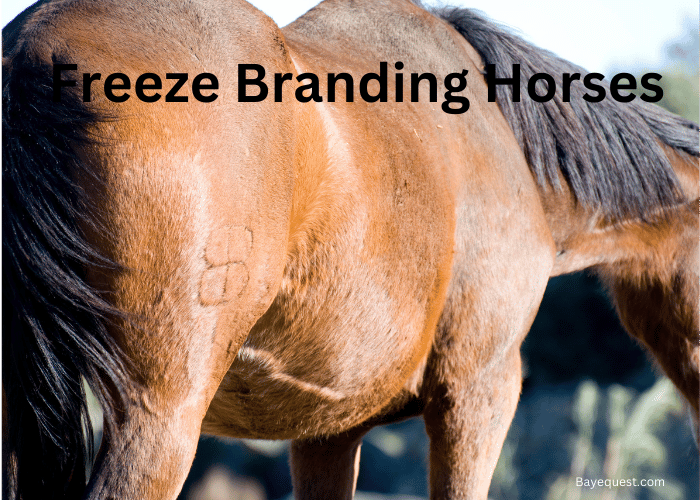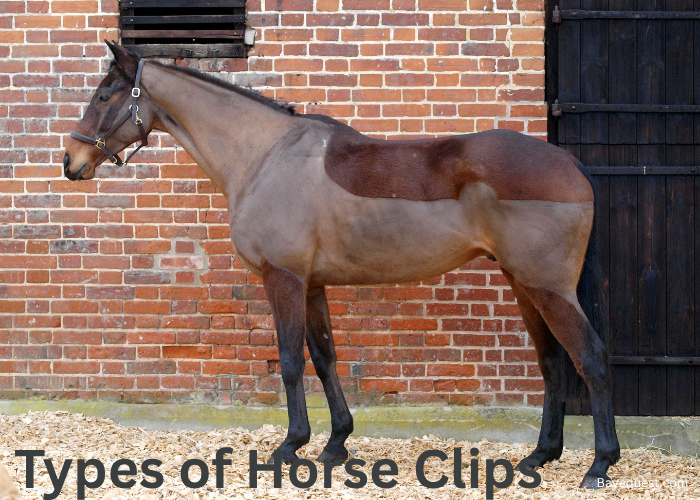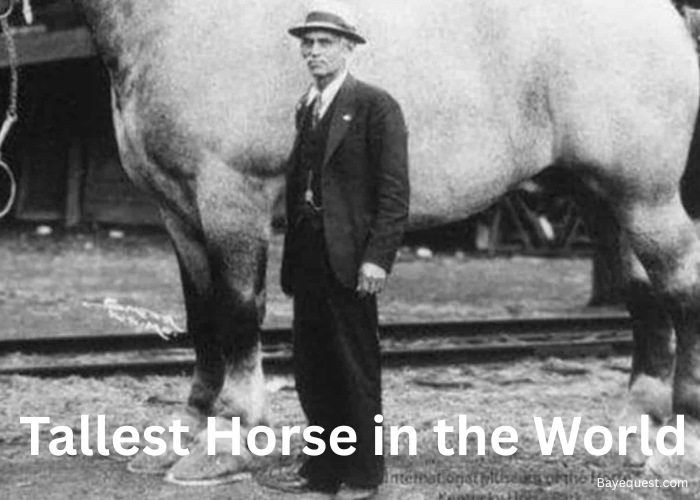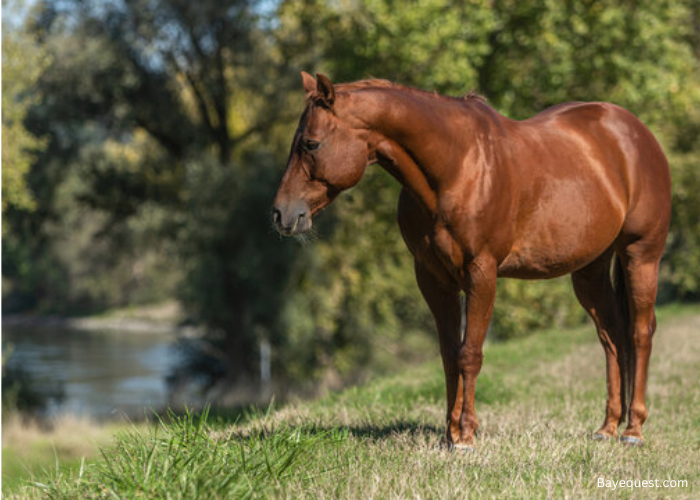Identifying horses has always been part of horse ownership. From simple markings to high-tech microchips, the methods have evolved.
Today, we’re diving deep into freeze branding. A method that stands out for being kind to the animal and effective for owners. This blog is all about giving you the lowdown on freeze branding: what it is, why it’s preferred by many, and how it’s done.
We want to help you and other horse lovers understand this process better. Whether you’re curious about the steps, the benefits, or the ethical side of things, we’ve got you covered.
Let’s make this journey informative and help you make the best decisions for your horses.
Understanding Freeze Branding Horses
Freeze branding is a special way to mark horses and other animals for identification. Unlike the old-school method of hot branding, freeze branding goes a cooler route.
It uses cold to stop the hair follicles from making pigment. So, the mark grows back in white hair, or on light horses, it might not grow hair at all. This leaves a clear mark without the harsh skin damage you get from hot branding.
This cooler branding technique started in the 1960s as a kinder option than the hot iron. It quickly won over horse folks because it was effective and less stressful for the animals.
Now, it’s not just for horses. Many types of livestock sport these chilly marks, but it’s a big hit in the horse world.
Diving into the science of it, freeze branding is pretty cool, literally. It uses liquid nitrogen or a dry ice and alcohol mix to cool the branding irons down to super cold temperatures, think -196°C (-320°F).
When pressed against the skin, this cold blasts the pigment cells in the hair follicles without harming the skin overall. This leaves a white, permanent mark.
What’s great about this method is it’s less hurtful for the horse and lets us make detailed marks. These marks are key for keeping track of who owns which horse, registering them, and even stopping theft.
The clear mark is easy to see, which can help stop someone from stealing a horse and makes it easier to find if one gets lost or taken. This has made freeze branding a top pick for many horse owners and breeders.
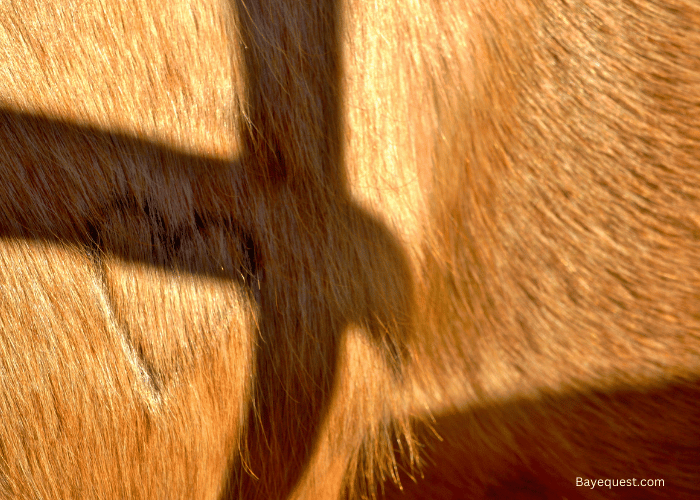
The Freeze Branding Process
Now, let’s dive deeper into the freeze branding process.
Preparation
Before you even think about chilling your irons, there’s groundwork to be done. This is about creating a calm environment for your horse.
You know your horse best, so use techniques that work to keep them relaxed. Whether it’s a familiar setting, a comforting voice, or their favorite treats, the goal is to minimize stress.
What you’ll need
- Branding irons
- Liquid nitrogen or dry ice and alcohol for chilling those irons
- Gloves for safety
- Clean cloth
- Clippers
- Sedation or local anesthesia
Step-by-step guide
Step 1: Chill the irons
Your first step involves temperature. You’ll immerse the branding iron in liquid nitrogen or dry ice-alcohol mix.
This isn’t a quick dip. It needs time to reach the ultra-low temperature required to alter the hair pigment without damagingto the skin.
Step 2: Dry, clean, and clip
Now, turn your attention to the branding site. The area needs to be bone-dry and spotless. Any dirt or moisture can act as a barrier between the cold iron and the skin, leading to uneven branding.
Use clippers to remove the hair, ensuring the iron can make direct contact with the skin. This step is crucial to the mark’s clarity and precision.
Step 3: Soak
Here’s a pro tip. Lightly soaking the clipped area with alcohol just before applying the brand helps conduct the cold more efficiently.
It evaporates quickly, reducing moisture but leaving the skin primed for better contact with the cold iron.
Step 4: Brand
With precision and confidence, press the chilled iron against the prepared skin. The duration of application is critical and varies depending on the horse’s coat color and the desired contrast of the brand.
Lighter coats may need less time to avoid damaging the skin, while darker coats might need a bit longer to ensure the hair grows back white.
Remember, consistency is key. Apply even pressure to ensure a clear, readable brand.
Step 5: Aftercare
Immediately following the application, the branded area will react to the cold. You’ll see swelling, which is a normal part of the process, indicating that the skin is responding.
Over the next few weeks, you’ll need to keep the area clean and monitor for any signs of abnormal reaction or infection. The true mark will emerge as the hair grows back, revealing the crisp, white brand.
Advantages of Freeze Branding
Freeze brands on horses bring several big pluses to the table.
First, it’s kinder to the animal. Unlike the hot iron, which burns, the cold method of freeze branding is a lot less painful. It’s like choosing a quick, cold press over a burn, which any animal would thank you for if they could.
Then, there’s the perk of having a clear mark that sticks around forever. This isn’t just about making your horse look unique; it’s a practical way to track them. Whether it’s proving ownership, registering, or even preventing theft, those white marks or the lack of hair in the branded area stand out. It’s a straightforward, effective way to say, “This is my horse.”
Another advantage is the precision freeze branding offers. You can get detailed with the designs, which means you can include more information than a simple mark.
Also, it’s worth mentioning the recovery is smoother and quicker with freeze branding. The healing process is less complicated since the skin itself isn’t burnt. There’s less risk of infection, and the area doesn’t need as much care as a burn would.
Lastly, freeze branding doesn’t just help the individual horse. It sends a message about animal welfare. Choosing a method that reduces pain and stress shows a commitment to treating animals with respect.
How to Choose a Freeze Branding Time for Your Horse
Picking the right time to brand your horse with a freeze mark is more about timing than just flipping a calendar open. Let’s break it down into a chat that’s easy to follow, keeping things straightforward.
First up, think seasons. Winter or early spring? That’s your sweet spot. Why? Because the coats on your horses are starting to change.
In winter, they’ve got their thick coats, which might make freeze branding a bit tricky. But as they shift into their sleeker spring coats, that’s your golden window. The thinner coat means a clearer brand and easier healing.
Now, let’s chat about your horse’s hair growth cycle. You want that brand to be visible, right? Branding when the hair is starting to shift from its winter to spring wardrobe helps ensure that it comes in white and cle once it grows back.
This timing varies a bit depending on where you live and your horse’s natural coat changes, so keep a close eye on them.
Age of the horse? That’s in the mix, too. Younger horses might handle the branding and recovery process a bit differently than older ones.
It’s not about being a certain age but about knowing your horse’s health. It’s always a good idea to chat with your vet before deciding. They can give you the thumbs up on whether your horse is in the right condition for branding.
Lastly, consider your schedule. Yes, yours. This isn’t a rush job. You need time to prepare, do the branding, and then care for the horse afterward. Picking a time when you’re not swamped means you can give this important task the attention it deserves.
So, in a nutshell: aim for that late winter to early spring window, watch your horse’s coat, check in with your vet, and make sure you’re not too busy. That’s how you pick the perfect branding time.
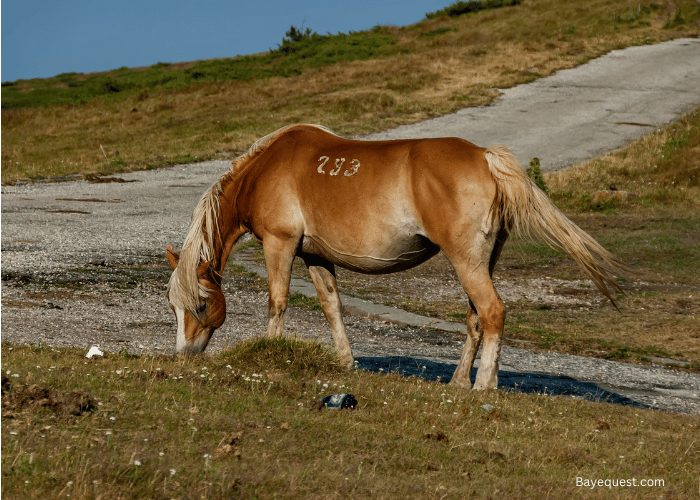
How to Choose a Freeze Brand Location for Horses
Choosing where to brand your horse is a bit like picking the perfect spot for a tattoo. It’s all about visibility, comfort, and making sure it serves its purpose well.
Let’s walk through how to pick that spot without getting tangled in too many details.
First off, think about why you’re branding. Is it for identification? Then you want a spot that’s easy to see at a glance. Common areas include the shoulder, thigh, or ribcage. These places offer a good canvas for the brand and are easy to spot without needing to move the horse around too much.
Visibility is key. You want to place the brand where a saddle or too much hair won’t hide it. Remember, the whole point is for it to be seen easily, whether that’s for proving ownership, registration, or even just for identification in a herd.
Comfort for your horse is a big deal, too. You’re looking for a visible and minimally disruptive spot for your horse. The shoulder, for instance, is a popular choice because it’s relatively flat and doesn’t interfere with movement or saddling.
Then, there’s the legal side of things. Some places have rules about where you can and can’t brand horses. It’s worth doing some homework to ensure your chosen spot is up to code. You don’t want to go through the whole process only to find out you’ve picked a no-go area.
Lastly, think about the future. A brand is for life. Pick a spot that makes sense long-term, considering how the horse might fill out or change as it ages.
Isummary,en choosing a branding locati is’s about balancing visibility, comfort, legality, and long-term practicality. Keep it simple, think it through, anl pick a spot that works best foh you and your horse.
Branding Times for Two Types of Irons
The duration you press the iron against your horse’s skin can vary based on whether you’re using stainless steel or copper/brass. Let’s make this easy to grasp.
| Color and age | Stainless steel | Copper/brass |
| Dark (8 months and younger) | 8 seconds | 7 seconds |
| Dark (older) | 8 seconds | 10 seconds |
| Light (8 months and younger) | 12 seconds | 15 seconds |
| Light (older) | 12 seconds | 15 seconds |
Note: Dark horses include palomino, bay, brown, black, chestnut, sorrel, etc. Light horses include white, lighgreyay, etc.
Caring for the Branded Site on Horses
Taking care of the area where your horse has been freeze-branded is crucial for a smooth healing process. Here’s a straightforward guide to help you take care of the branded site properly.
Right after branding
- Keep it clean. Initially, you might not need to do much. The cold has done its job, but you still want to ensure the area stays clean. Avoid applying any creams or ointments unless advised by your vet.
The first few days
- Monitor for swelling. It’s normal for the branded area to swell a bit. This should go down after a few days. If it doesn’t, or if you notice excessive swelling, it’s time to call the vet.
- Watch for signs of discomfort. Your horse shouldn’t be in much pain from freeze branding, but keep an eye on their behavior. If they seem overly distressed or uncomfortable, consult your vet.
As it heals
- Gentle cleaning. You can gently clean the area with a mild soap and water if it gets dirty. Be sure to rinse it well and pat it dry.
- Observe the hair growth. Over the next few weeks, you’ll see the new hair growing in. This is where you’ll start to see the results of your freeze branding. The new hair should come in white or not at all, depending on your horse’s coat and the depth of the brand.
Long-term care
- Regular checks. Even after the brand has healed, it’s good practice to check it regularly, especially before and after grooming. This is to ensure there are no late-onset irritation or skin issues at the site.
- Sun protection. If your horse has a light coat, and the branded area has less or no hair, consider sun protection to prevent sunburn. A simple equine-safe sunblock can do the trick.
Post Branding Results
After the freeze branding process, you’re not just waiting for the brand to heal. You’re watching for the emergence of a clear, permanent identification mark on your horse.
Here’s what to expect after the branding.
| Times | Brand site |
| 5 seconds | Indented pattern shows |
| 5-10 minutes | The top layer of skin sheds |
| 5 days | Swelled pattern disappears |
| 1 month | Top layer of skin sheds |
| 2 months | White hair starts growing in |
| 3 months | White hair growth complete |
Cold Branding Vs Hot Branding
Regarding freeze branding versus hot branding, both methods have their place in horse management. However, they differ in approach, impact, and outcomes.
Freeze branding uses extreme cold to alter the hair pigment cells. This method is less painful due to the numbing effect of the cold, making it a bit more horse-friendly.
It requires a bit of patience, though, as the final results aren’t immediate. You’ll have to wait for the hair to grow back to see the brand.
On the flip side, hot branding applies a heated iron to the horse’s skin, creating a scar that forms the brand. It’s a quicker process with immediate results, but it’s more painful for the horse.
The visibility of hot brands can vary, especially on darker coats, and over time, the scar might become less distinct.
In essence, while hot branding offers the tradition and immediacy of a permanent mark, it carries the drawbacks of pain. Freeze branding, although slower to reveal its mark, is considered more humane
The choice between the two often boils down to considerations of animal welfare, the desired visibility of the mark, and personal preference.
Ethical Considerations for Freeze Branding a Horse
When we talk about freeze branding of horses, it’s not just about how it’s done. It’s about why and the bigger picture – the ethics behind it.
First up, the why. Identifying horses is important – for their safety, for legal reasons, and for managing their health and lineage. Freeze branding steps in as a way to do this that’s considered to be kinder than some alternatives.
But, even though it’s seen as a gentler option, it’s not without its critics. Some folks argue any kind of branding is stressful and can be painful.
It’s a valid point. Imagine, it’s cold. And even though it’s quicker and involves less pain than hot branding, it’s not a tickle either.
It’s about balancing the need to identify the horse with doing it in the most humane way possible.
There’s also the matter of necessity. With microchipping available as a less invasive option, some question if branding, even freeze branding, is needed at all.
However, freeze branding does have its place. In some situations, a visible mark is needed. It can be a deterrent against theft and a quick way to identify a horse in a field or at an event.
It’s about making sure that if we’re going to mark our horses, we’re doing it with the utmost care and respect for their well-being.
So, the ethics of freeze branding boil down to a few key points. It’s about why we’re doing it, ensuring it’s for the horse’s benefit and not just for convenience. It’s about how and considering alternatives that might offer a less invasive way to achieve the same goals.
In the end, caring for horses is about more than just their physical health. It’s about their dignity and ensuring we make choices that respect them.
Do it Yourself or Hire a Pro?
Choosing to freeze-brand your horse yourself or hire a pro is a big decision. Doing it yourself can save money and let you pick the time, but you need to be sure you can do it right and keep your horse calm.
It’s not just about having the tools. You need to know how to use them well to make sure your horse is okay. On the other hand, a pro knows exactly what to do and can make sure it’s done with less stress for your horse. Yes, it costs more, but it might be worth it for the peace of mind.
Your choice should depend on how confident you feel, how comfortable you are with the process, and what’s best for your horse. The most important thing is that your horse is safe and the branding goes smoothly, no matter if you do it or a pro does.
Read also: How to make money from horses.
Liquid Nitrogen or Dry Ice and Alcohol?
When it comes to freeze branding, you’ve got two choices for cooling the iron: liquid nitrogen or a mix of dry ice and alcohol. Liquid nitrogen gets cold, and fast, making it a strong choice for quick, effective branding. It’s straightforward but you’ll need to handle it carefully because it’s cold.
The dry ice and alcohol mix is a bit easier to get and use, and while it doesn’t get as cold as liquid nitrogen, it still does the job well for branding. Your decision might depend on what’s easier for you to get and how comfortable you are with using these materials.
Both work for freeze branding, so it’s about what suits you and your horse best.
Alternative Identification Methods
There are several alternative methods to identify horses besides branding. These include:
- Microchipping. A small chip with a unique ID number is inserted under the horse’s skin. It’s a quick and low-pain method. A scanner reads the chip to identify the horse.
- Tattooing. A visible mark is tattooed on the horse, usually inside the lip or the ear. It’s relatively quick but can fade over time.
- DNA testing. This method uses the horse’s genetic material for identification. It’s perfect for verifying lineage but doesn’t mark the horse physically.
- RFID tags. Similar to microchips, these tags can hold more information and be attached to the horse’s gear or implanted. They’re scanned to retrieve the data.
- Photographic registry. Detailed photos and descriptions capture the horse’s unique features and markings. It’s a non-invasive way to identify horses from a distance.
FAQs
How much does freeze branding cost?
The cost of freeze branding can vary depending on your location, the professional you use, and the number of horses being branded. Generally, you might expect to pay anywhere from $50 to $150 per horse. This price can fluctuate based on the complexity of the brand and any travel fees if the professional has to come to you.
Can I use freeze branding for breed or registration identification?
Yes, you can use freeze branding for breed or registration identification. Many breed registries and organizations accept freeze brands as a valid form of identification.
How to Freeze Brand Horses: Conclusion
And there you have it, folks! The ins and outs of freeze branding served up cool and clear. Freeze branding isn’t just about putting a mark on your horse. It’s about choosing a path that’s kinder, smarter, and leaves a lasting impression in the best way possible.
As you ponder the best way to identify your equine pal, remember that freeze branding offers a blend of tradition and innovation. It also provides a permanent solution that’s easy on the eye and gentle on your horse.
So, whether you’re prepping for a DIY branding day or planning to call in the experts, the choice you make is a reflection of your care and commitment to your horse’s well-being.
Now, check out our article on “equine chiropractic adjustment” to learn how these specialized techniques can improve your horse’s mobility and overall well-being.




